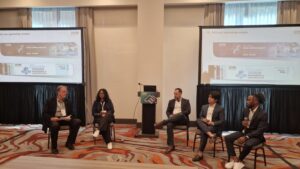The semiconductor industry leads the pack in technological advancement. Its influences are direct and indirect to the success of thousands of products and industries. However, the layout and construction of a fab or semiconductor manufacturing plant demand huge financial investment. Hence, cost management strategies in semiconductor plant engineering are crucial for the long-term feasibility and competitiveness of a project. The article sets out strategies to control cost and maximize return on investment in semiconductor plant engineering from design to construction stages, and beyond. Industry leaders will be able to navigate the complex landscape of fab development with financial prudence, putting their projects on a path toward more successful completion in a changing market.
Cost Reduction In Semiconductor Fabs: Strategic Planning and Design Optimization
Effective cost management for semiconductor plant engineering begins at pre-construction. Strategic planning and design optimization thus become the foundation for financial efficiency from conceptualization to construction handover.
Comprehensive Feasibility Studies
Proper feasibility study is, in essence, the most basic step in semiconductor cost management. It shall involve market study, consideration of site selection, and long-term operating projections. Furthermore, it provides companies with the earliest possible identification of problems and opportunities, hence reducing costly changes during the project implementation. In addition, it helps secure finance and stakeholder buy-in, providing a sound financial basis for the project.
Modular and Flexible Design Approaches
Module and flexible design approaches can significantly cut costs while enhancing long-term value. Furthermore, the approach allows for easier expansion and reconfiguration of the facility when there are further changes in technology and market demands. Moreover, modular designs can also speed up the construction timeline. This can cut labor costs and offer quicker time-to-market. Additionally, design flexibility can also support innovation in new technologies and production processes. This is without undergoing huge renovation changes.
Energy-Efficient Design Integration
Installation of energy-efficient design elements at the onset can yield substantial long-term savings. These include the optimization of HVAC systems, smart lighting solutions, and the application of energy recovery technologies. Furthermore, such designs can cost more upfront but reduce operation costs substantially during the life of the facility. Energy-efficient designs also help in achieving sustainability goals. They can even make projects eligible for incentives and enhance corporate reputations.
Semiconductor Plant Operational Cost Management: Supply Chain Optimization and Strategies Of Procurement
Semiconductor plant engineering requires an advanced approach to supply chain management & procurement. This is because the manufacturing process is complex. Optimization in these areas leads to major saving possibilities and outcomes in projects.
Strategic Supplier Partnerships
Strategic partnerships involving key suppliers can reward in great measure. Long-term agreements ensure better prices, priority while allocating materials, and lead to the co-development of innovative solutions. It also facilitates better communication and coordination. As a result, it minimizes delay risk and the associated cost impacts. Additionally, close collaboration with suppliers can lead to customized solutions that improve efficiency and waste reduction.
Global Sourcing and Risk Mitigation
Global sourcing reflects incredible cost advantages. This has to be done precisely to mitigate the associated risks. Supplier diversification can hedge risks due to geopolitical instability, natural disasters, or local economic fluctuations by spreading at geographically dispersed locations. Moreover, strong assessment and management of the supply chain risk is important. Contingency planning, regular audits of suppliers, and maintaining buffer inventories for important components are all part of it.
Effective Procurement Technologies
The use of advanced procurement technology can speed up processes and consequently save on costs. Technologies include e-procurement systems, analytics for suppliers through artificial intelligence, and blockchain, among others. These technologies can contribute to the improvement of the operations in the supply chain. In addition, these tools can automate more routine tasks while offering real-time knowledge regarding market conditions and indicate where opportunities for cost-saving exist. They also offer better visibility across the supply chain for better decision-making as well as risk management capabilities in semiconductor plant engineering.
Efficient Engineering Strategies For Semiconductor Plants: Construction Management and Implementation
Construction management is often critical to keeping the project on schedule and within budget for semiconductor plant engineering. Best practices at this stage prevent costly overruns and delays.
Lean Construction Methodologies
Adopting lean construction practices has the potential to minimize waste and improve efficiency. It is an approach that is based on continuous improvement, elimination of unnecessary activities, and also work process optimization. Moreover, techniques like the Last Planner System and Pull Planning can enhance coordination among different trades by minimizing idleness and resource waste. These methods also emphasize collaboration and problem-solving. So, this leads to faster problem-solving and less costly delays.
Advanced Project Management Tools
Utilizing advanced project management tools is necessary for overseeing the complexity involved in semiconductor plant engineering. BIM or Building Information Modeling can allow better coordination, detect clashes before they develop as on-site problems, and provide material quantification. Moreover, the integrated project delivery platforms enhance communication and the exchange of documents among all stakeholders. So, these tools improve efficiency and also provide valuable data for further planning and cost estimation of projects.
Prefabrication and Modular Construction
Prefabrication and modular construction can be very time and cost-efficient when they are integrated. Furthermore, parallel processing of off-site and on-site work can be done which usually shortens the project duration. Moreover, factories have much better quality control, so there would be fewer defects and reworks. Prefabrication also reduces on-site labor and therefore costs. This is particularly important in high labor cost/skilled labor deficient areas.
Cost Reduction In Semiconductor Fabs: Operational Efficiency and Continuous Improvement
Cost control in semiconductor plant engineering is much more than a construction activity. Operational efficiency and continuous improvement must be in place in order to ensure long-term effectiveness in semiconductor cost management.
Predictive Maintenance and Asset Management
The strategies of predictive maintenance reduce costly failures of equipment and prevent any form of unexpected downtime. Furthermore, advanced sensors and AI-driven analytics can determine when maintenance is required. Hence, the costs of maintenance are balanced with the reliability of the equipment. Moreover, the correct asset management systems track lifecycle costs for equipment, aiding decisions on repairing versus replacing it. These methods lower direct costs of maintenance while minimizing time lost in production.
Energy Management and Sustainability Programs
Continued energy management and sustainability programs tend to dramatically reduce the operating costs of an organization. This includes real-time energy monitoring systems, renewable energy sources, and constant optimization of facility systems. Moreover, water recycling and waste reduction programs tend to eliminate unwanted expenditures and maintain compliance with tightening environmental regulations. Additionally, the ROI for most of these efforts in semiconductor plant engineering also increases through government incentives.
Workforce Development and Training
Long-term semiconductor cost management is determined by investment in workforce development and training. Furthermore, trained employees work better, reduce errors, and enable continuous improvement activities. Moreover, knowledge management systems developed help retain and share expertise within the organization. Besides, a skilled workforce is sensitive to changes in new technology and processes, thus reducing the costs of technological transition.
To Sum Up
Effective cost management in semiconductor plant engineering is a challenge involving numerous aspects from strategic planning and design optimization to efficient construction management and ongoing operational improvements. Every stage of a fab’s lifecycle opens up numerous opportunities to improve performance or simply to reduce costs. Companies dealing with the development of semiconductors can manage the complexity of developing fab with maximum return on investment by adopting all the strategies provided in this article.
To delve deeper into these critical issues and learn from industry leaders, join the Semiconductor Plant Design Engineering & Construction Summit. It is being held in Phoenix, AZ on November 6-7, 2024. It will be the perfect opportunity to go deep into management techniques, get new opportunities for networking with peers, and influence the future direction of an efficient semiconductor plant. Register now!



